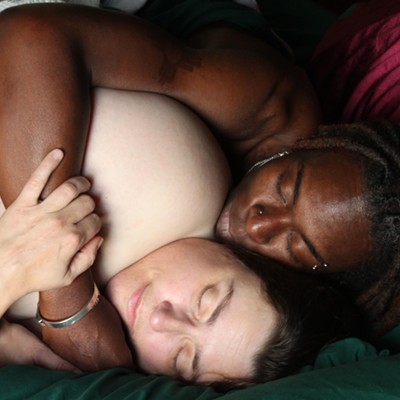A lot of Downtown workers probably go through their workweek without noticing they are being stalked every step of the way. Sure, some of us do occasionally sense a slightly menacing presence nearby, but often that's just a Duquesne Club member on the way to a ritual.
But take a closer look, and you'll see there are plenty of lions lurking within the urban jungle. (Please, don't send me letters explaining that lions live on the savannah: It's just a metaphor, people.)
The Arrott Building at the cover of Fourth Avenue and Wood Street, for example, is festooned with lion masks. So is the older portion of the Macy's façade running along Smithfield. And as we'll see, lion sculptures are some of the city's most prominent works of public art.
In fact, decades ago one of Pittsburgh pioneering architectural historians, James Van Trump, went on a sort of safari to hunt them down. When he was through, he wrote a 1960 Carnegie magazine travel essay about the trip.
"Lions in the Streets" begins by noting that Pittsburgh is hardly alone in featuring the lion prominently. Lions seem to represent nature without being bestial, to symbolize power but not oppression. Not surprisingly, they have been used in architecture throughout human history.
The lion is "the familiar of the Assyrian palace, the Roman forum, the medieval cathedral, and the Baroque city square," Van Trump writes. "[A]s an Old Testament subject he is found in history and proverb, and in the New he is both he devouring Satan and the symbol of Christ as the Lion of Judah."
Obviously, anything that can both devour Christians and symbolize them is a pretty flexible bit of imagery. Lions are "noble and guardians and protectors," says Mary Ann Eubanks, the education coordinator for the Pittsburgh History & Landmarks Foundation, echoing Trump. "Children love them, and so do the pigeons."
And since lions can mean so many things to so many people, it's easy for artists to project human traits upon them. That, too, is probably a reason they are used so widely. For example, take a look at the three best-known lion sculptures Downtown.
The first set of lions, which guard the Grant Street entrance to the Allegheny County Courthouse, are the most unusual, and mysterious. No one knows for sure who sculpted them, for starters, and it's also unclear whose idea it was to add them to the building. (There is no record of the building's architect, H.H. Richardson, having any role in their design.) Plus, they're a whole different species from the other lions ranging Downtown: With their curly manes, wide-set eyes and broad noses, these are creatures from Byzantine tradition, or else someplace farther east.
By contrast, in the lobby of the Frick Building across the street prowl two lions who are much easier to recognize. Sculpted by A. Phimster Proctor, a well-regarded turn-of-the-century sculptor, these lions project a sort of superciliousness. The effect is only enhanced by the fact that, like the courthouse lions, they were raised up from street level when Grant Street was lowered in 1911. The Frick lions project "an air of prosperous Edwardian complacency," Van Trump contends. "One could not possibly imagine their pouncing on a lamb or an unwary stockbroker."
Pouncing on an unwary union organizer, though, might be another matter — especially since the building was built by, and named after, steel titan Henry Clay Frick. And the lions prowling his structure certainly seem disdainful when compared to the two lions standing guard over another famed Downtown building: Fourth Avenue's Dollar Bank building.
These are probably the best-known lions in the city, in part because they seem like family dogs — as willing to lie at the foot of your bed as to rip the arm off an intruder. They won't just guard your money; they'll help keep it warm at night. "There is no doubt that these hearth-rug champions are the Noble Animals so dear to Victorian sentimentality," writes Van Trump. They are, in other words, the perfect creatures for a city environment: reasonably tame and probably even housebroken.
Which is, come to think of it, how I'd describe most members of the Duquesne Club.










